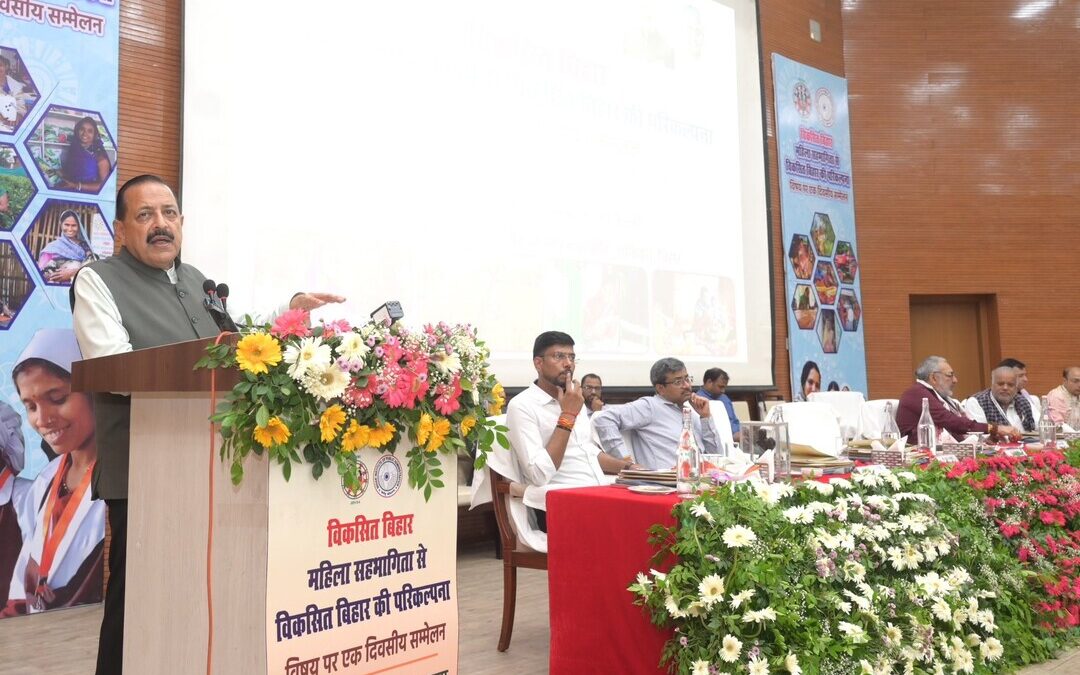India Has 76,000 Women-Led Startups, Many in Smaller Cities, Minister Says
Minister highlights surge in women-led startups and grassroots leadership as key to India’s 2047 development vision.
India is home to more than 76,000 women-led startups today, many of them emerging from Tier 2 and Tier 3 towns, Union Minister Dr. Jitendra Singh said on Saturday, calling women-led development a central pillar in India’s vision to become a developed nation by 2047.
Speaking at the “Viksit Bihar: Envisioning a Developed Bihar through Women’s Participation” conference in Patna, Singh said women entrepreneurs were redefining India’s growth narrative across sectors, particularly in science, innovation and public leadership.
Empowered Women, Empowered Nation
Dr. Singh, Minister of State for Science and Technology and the Prime Minister’s Office, said that women’s leadership was no longer confined to participation but was central to decision-making.
“From Chandrayaan-3’s Kalpana to Aditya-L1’s Nigar Shaji, women have led India’s space glory,” he said, adding that more than one-third of laboratories under the Council of Scientific and Industrial Research are now headed by women.
He noted that around 1.7 lakh startups currently operate in India, with women leading 76,000 of them, generating more than 1.7 million jobs.
Four Pillars of Women’s Empowerment
The Modi government’s model for women-led development rests on four pillars, Singh said: access and inclusion, scientific and technological empowerment, economic and social upliftment, and workplace and legal reforms.
Key initiatives include:
- Opening of Sainik Schools and the National Defence Academy to girls;
- Launch of targeted STEM schemes such as Women in Science and Engineering, Gender Advancement for Transforming Institutions and the Women Scientist Programme;
- Over 60 percent of Mudra loan recipients are women, and 3 crore “Lakhpati Didis” are emerging from rural Self-Help Groups;
- Legal and workplace reforms, including paid childcare leave, pension entitlements for dependent daughters and maternity benefits after stillbirths.
Patna Women’s College will be adopted under the Consolidation of University Research for Innovation and Excellence scheme, Singh said, to expand its science infrastructure and support female researchers.
Bihar’s Leadership in Gender Reforms
Commending Bihar’s record, Singh cited the state’s 50 percent reservation for women in panchayats and local bodies, and 35 percent in police and civil services.
More than 3 million women in Bihar have received targeted economic support worth ₹5,000 crore ($580 million) under state and central schemes, he said, urging the Indian Institute of Public Administration to document Bihar’s women-centric reforms as a blueprint for other states.
Tech Launch and Publications
The Minister also launched the Jeevika E-Learning Management System App to expand digital learning access for rural women and unveiled “Shashakt Mahila, Samriddh Bihar,” a book highlighting women’s contributions to the state’s progress.
“This silent revolution is rewriting India’s future, led by first-generation women entrepreneurs, researchers, and policymakers,” Singh said. “It is no longer about women’s participation—it is about women-led development.”
The event was attended by union ministers Giriraj Singh and Rajiv Ranjan Singh, Bihar Rural Development Minister Shravan Kumar, IIPA Director-General S.N. Tripathi and senior officials from Bihar and the central government.
Nirmal Menon
Related posts
Subscribe
Error: Contact form not found.


